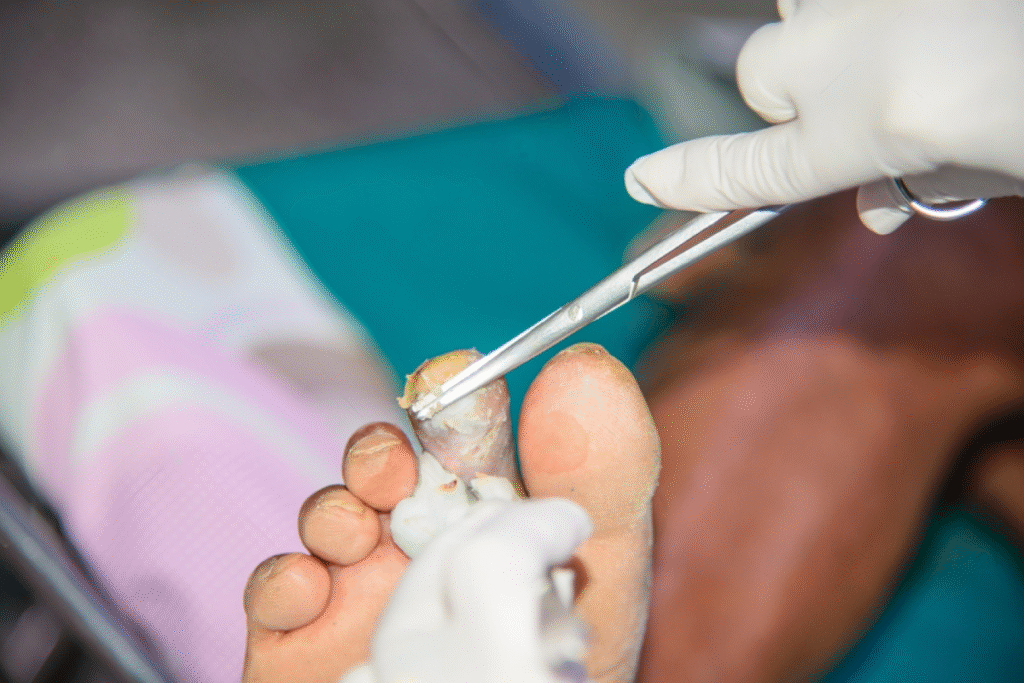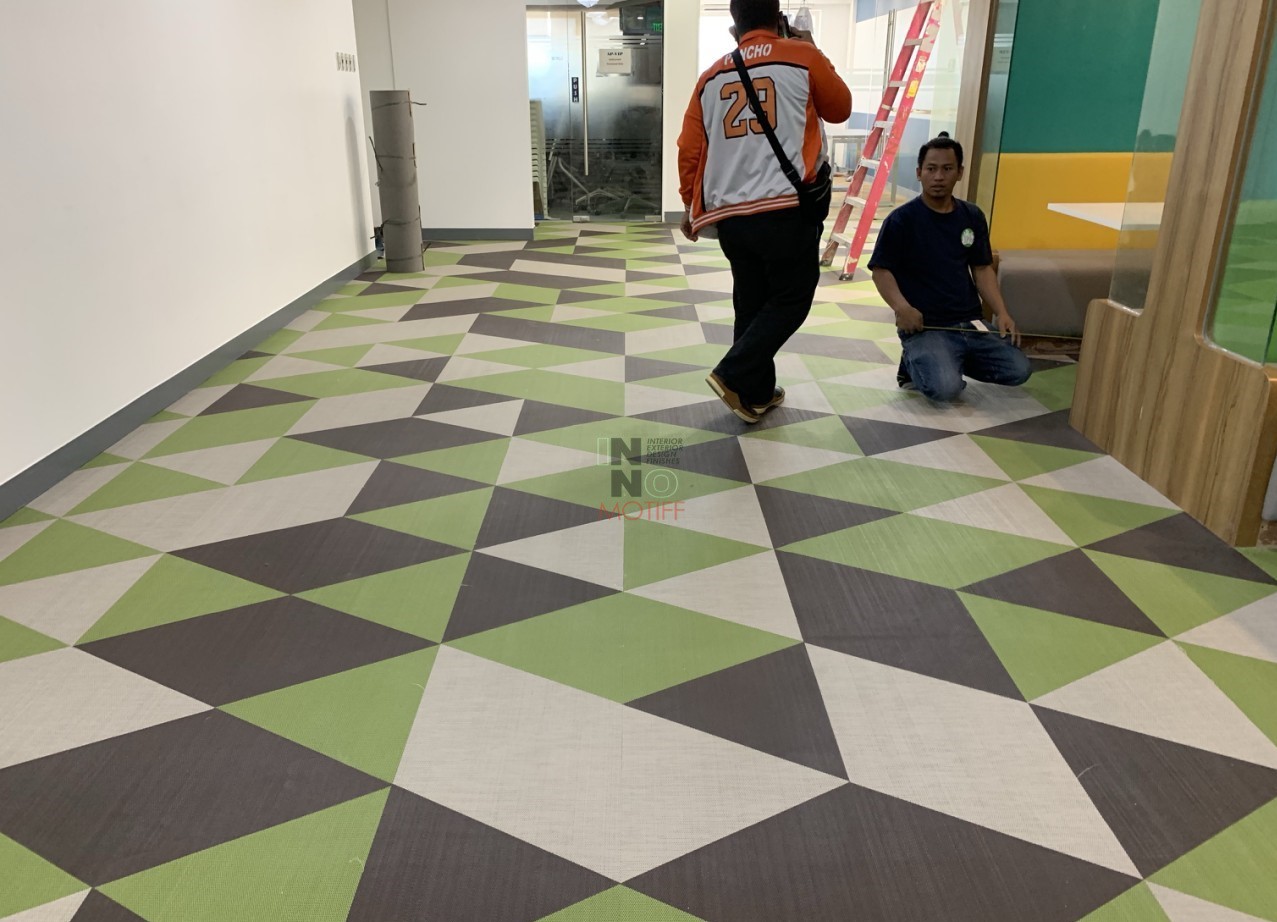Understanding Necrotic Foot
A necrotic foot occurs when tissue in the foot dies due to poor blood supply, severe infection, or other complications that prevent oxygen and nutrients from reaching the cells. Once tissue becomes necrotic, it cannot regenerate on its own, which makes specialized medical treatment essential. Orthopedic specialists play a crucial role in identifying the extent of the damage and developing strategies that may save the limb or improve mobility. Left untreated, a necrotic foot can rapidly worsen and put a person at risk of life-threatening complications. This condition is often linked with chronic illnesses like diabetes or vascular disease, but it can also stem from injuries that do not heal properly. Understanding the seriousness of necrosis is the first step toward effective care. With timely orthopedic treatment for necrotic foot, many patients are able to preserve function and avoid more severe interventions.
Causes and Risk Factors of Necrotic Foot
There are several conditions that can contribute to the development of necrosis in the foot. Diabetes is one of the most common underlying causes, as high blood sugar levels damage blood vessels and restrict circulation. Peripheral artery disease and other vascular disorders also play a major role in limiting oxygen delivery to tissues. Infections, especially untreated wounds or ulcers, can spread quickly and lead to tissue death. Smoking, obesity, and a sedentary lifestyle are additional factors that increase the likelihood of poor circulation and delayed healing. Trauma, frostbite, or burns can also trigger necrosis if blood flow is disrupted for an extended period. People with weakened immune systems are more vulnerable to infections that may progress into necrosis. By identifying these risk factors, orthopedic specialists can better tailor treatment to address both the underlying cause and the foot condition itself.
Early Warning Signs to Watch For
Recognizing necrosis early gives patients the best chance at successful treatment. One of the most visible signs is a change in skin color, where the affected area may turn black, dark brown, or gray. Other symptoms include persistent ulcers, swelling, foul odor, or pus discharge from a wound. Some patients experience intense pain, while others, especially those with diabetes, may feel little to no sensation due to nerve damage. The skin may also become hard, dry, or flaky in areas where blood supply has been cut off. Sometimes, numbness spreads before visible tissue damage appears, making self-examination very important. If these warning signs are ignored, necrosis may progress quickly, requiring more aggressive treatment such as amputation. Seeking orthopedic treatment for necrotic foot at the first sign of these symptoms can help limit complications and preserve mobility.
Diagnostic Process in Orthopedics
When a patient presents with signs of a necrotic foot, orthopedic specialists perform a thorough evaluation to determine the severity and spread of the condition. A physical examination is often the first step, focusing on visible tissue damage, wound depth, and circulation levels. Imaging techniques like X-rays, CT scans, or MRIs provide insight into whether bones or deeper tissues are affected. Vascular studies may also be ordered to assess blood flow in the arteries and veins of the leg and foot. Laboratory tests can detect infections in the bloodstream or identify bacteria that may be complicating the healing process. Orthopedic surgeons collaborate with vascular and infectious disease specialists when needed to create a comprehensive care plan. Accurate diagnosis is essential because it influences whether conservative management, reconstructive surgery, or amputation is necessary. This step ensures that treatment is precise and addresses all contributing factors.
Non-Surgical Orthopedic Treatments
For patients with early or less severe necrosis, orthopedic specialists may first recommend non-surgical treatment options. Medications are prescribed to control infections, reduce inflammation, and relieve pain. Wound care plays a vital role, and this often includes regular debridement, where dead tissue is carefully removed to allow healthy tissue to grow. Advanced dressings with antimicrobial properties or negative pressure wound therapy may be applied to support healing. In some cases, hyperbaric oxygen therapy is used, where patients breathe pure oxygen in a pressurized chamber to improve tissue oxygenation. Orthopedic care may also involve customized footwear or offloading devices to reduce pressure on the affected area and prevent further injury. These treatments require close monitoring, as necrosis can worsen if not managed aggressively. Patients who respond well to conservative care may avoid surgery, but only with consistent follow-up and adherence to medical advice.
Surgical Orthopedic Interventions
When non-surgical methods are not enough, orthopedic treatment for necrotic foot often requires surgery. One of the most common procedures is debridement, where surgeons remove necrotic tissue to stop infection from spreading and to promote healing. In more advanced cases, reconstructive surgery may be needed, including skin grafts or flaps to cover damaged areas. If blood supply is severely compromised, vascular surgery may be performed alongside orthopedic procedures to restore circulation. Unfortunately, in cases where necrosis is widespread and threatens overall health, partial or complete amputation may be the only option. While this may sound frightening, amputation can be life-saving and is often followed by rehabilitation programs to restore mobility. Post-surgical care is essential, as patients require wound management, physical therapy, and sometimes prosthetics to adapt to changes. Orthopedic specialists guide patients throughout this process to ensure the best possible outcome.
Role of Orthopedic Specialists in Long-Term Care
Orthopedic care does not end after surgery or initial treatment. Long-term management is critical to preventing recurrence and maintaining mobility. Specialists monitor patients for signs of recurring infection, poor circulation, or new wounds. Customized orthopedic footwear and insoles are often recommended to reduce pressure and prevent ulcers. Rehabilitation and physiotherapy help patients rebuild strength, improve balance, and adapt to changes in their gait. For those who undergo amputation, orthopedic teams collaborate with prosthetic specialists to restore independence. Education plays a key role, as patients must learn proper foot care, daily monitoring, and lifestyle changes to reduce risks. Continuous orthopedic follow-up provides reassurance and guidance, ensuring that patients are not left to manage their condition alone. This holistic approach emphasizes both physical healing and emotional support.
Lifestyle Adjustments to Support Recovery
Beyond medical treatment, lifestyle changes are essential for managing a necrotic foot and preventing further complications. A nutrient-rich diet that supports circulation and wound healing is highly recommended, with an emphasis on protein, vitamins, and minerals. For diabetic patients, strict blood sugar control is non-negotiable, as it greatly affects healing outcomes. Quitting smoking and maintaining a healthy weight are also important to improve circulation. Daily foot hygiene, including careful washing and inspection, reduces the risk of infections going unnoticed. Patients are encouraged to wear supportive shoes that prevent injuries and to avoid walking barefoot. Light exercises that stimulate blood flow, such as walking or gentle stretching, may be recommended under medical supervision. These adjustments, when combined with orthopedic treatment for necrotic foot, create a strong foundation for recovery and long-term health.
Advancements in Orthopedic Treatment for Necrotic Foot
Medical technology continues to improve the outlook for patients with necrosis of the foot. Orthopedic surgeons now use advanced wound dressings that release healing agents directly into the tissue. Regenerative medicine, including stem cell therapy, shows promise in promoting new tissue growth and improving blood supply in damaged areas. Minimally invasive surgical techniques are reducing recovery times and preserving more healthy tissue. In some hospitals, 3D printing is being used to design custom implants and prosthetics that enhance mobility. Hyperbaric oxygen therapy has become more accessible, and ongoing research supports its role in limb salvage. Clinical trials are exploring new drugs that target inflammation and promote vascular repair. These innovations are shaping the future of orthopedic treatment for necrotic foot, offering hope to patients who once faced limited options.
Frequently Asked Questions (FAQ)
What happens if necrotic foot is left untreated?
If necrotic tissue is not treated, it can lead to widespread infection, gangrene, and potentially life-threatening sepsis. Amputation is often required when the condition is ignored.
How do orthopedic surgeons decide between conservative care and amputation?
Surgeons consider the extent of necrosis, the patient’s overall health, blood circulation, and response to initial treatments before making a decision. The goal is always to preserve as much healthy tissue as possible.
Can a necrotic foot heal completely with treatment?
Necrotic tissue itself cannot be revived, but with timely and appropriate orthopedic treatment, surrounding healthy tissue can be preserved, allowing the foot to function and heal.
What is the recovery time after orthopedic surgery for necrotic foot?
Recovery varies depending on the procedure, but it generally ranges from several weeks to several months. Rehabilitation and physiotherapy are important parts of recovery.
Are there ways to prevent necrotic foot if someone is at high risk?
Yes, maintaining good circulation, managing chronic illnesses like diabetes, practicing excellent foot hygiene, and visiting a podiatrist or orthopedic specialist regularly are key preventive measures.









